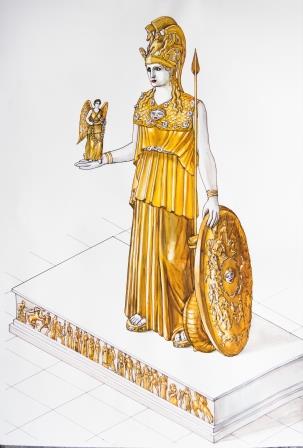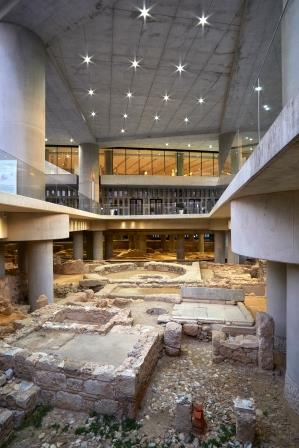The 11th birthday of the Acropolis Museum, 20 June 2020
On Saturday 20 June 2020 the Acropolis Museum celebrates 11 years and welcomes back its visitors. The Museum re-open on Monday 15 June and has undertaken all the necessary measures for the protection of its visitors.
On Saturday, the Museum will be open from 8 a.m. until 8 p.m. with a reduced entry (5 euro) to all exhibition areas. Additionally, visitors will have the opportunity to see the temporary exhibition ‘Chisel and Memory'. The contribution of marble craftsmanship to the restoration of the Acropolis monuments’, which will continue until 30 September 2020. The Museum's second floor restaurant will operate until 12 midnight .
Gallery talks held by the Museum’s Archaeologist-Hosts will commence this week. Visitors wishing to participate are required to wear a protective mask (not provided by the Museum) and to use the whisper guide system headsets (provided by the Museum to participants).
‘The lost statue of Athena Parthenos’

The Acropolis Museum brings to life, digitally, the statue of Athena Parthenos. Made of gold and ivory, this masterpiece was designed by Phidias for the Parthenon. The Museum invites visitors on a walk of knowledge to find out more about its construction materials and techniques, its myths and allegories, its radiance and its adventures.
Greek: Every Friday at 1 p.m.
English: Every Friday at 11 a.m.
Duration: 50 minutes
Participation: Limited to 10 visitors per session. For registration, please refer to the Information Desk at the Museum entrance on the same day. First-in first-served.
Price: The general admission fee (€10) to the Museum will cover this experience.
‘A walk through the Museum with an archaeologist’
Visitors have the opportunity to participate in evening walks through the Museum exhibition galleries, making unanticipated stops and various discussions, together with an Archaeologist-Host.
Greek: every Friday, at 8 p.m.
English: every Friday, at 6 p.m.
Duration: 60 minutes
Participation: Limited to 10 visitors per session. For registration, please refer to the Information Desk at the Museum entrance on the same day. First-in first-served.
Price: The general admission fee (€10) to the Museum will cover this walk and talk.
‘Walking in the ancient neighborhood of the Acropolis Museum’

Visitors are given the opportunity to wander through the archaeological excavation which stretches underneath the Museum, like a giant exhibit. They will be able to walk on the ancient neighborhood’s streets, take a closer look at the houses with their courtyards and wells, enter the heart of the impressive mansions with the private baths, examine the workshops with the water reservoirs, take a magical stroll through time and the daily life of the people who lived in the shadow of the Acropolis’ rock for over 4,500 years.
Greek: every Saturday & Sunday, at 1 p.m.
English: every Saturday & Sunday, at 11 a.m.
Duration: 45 minutes
Participation: Limited to 10 visitors per session. For registration, please refer to the Information Desk at the Museum entrance on the same day. First-in first-served.
Price: The general admission fee (€10) to the Museum is required (on Saturday 20/6 the general admission fee will be reduced to €5).